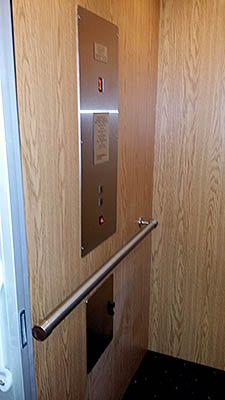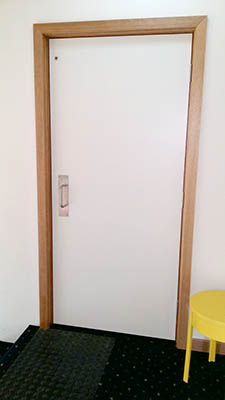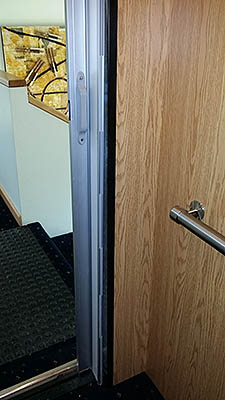When an architect specifies a new passenger lift it is important to confirm the correct lift is being provided, for compliance, usability and accessibility.

Internal of a AS1735.16 Lift
Under the recently amended access requirements of the National Construction Code (Volume 1 Building Code of Australia), and the Premises Standards, first floor areas of existing buildings are often required to be upgraded to provide access for people with disabilities. This often necessitates the installation of a new passenger lift.
Any new passenger lift must be selected in accordance with BCA Table E3.6(a). On the assumption that the vertical travel distance in an existing building between the ground and first floor levels is no more than 4m, the type of passenger lift required to be provided (as a minimum) by Table E3.6(a) during the works is a low-rise, low-speed constant pressure lift.
Prior to BCA 2013 these type of lifts were referred to as a ‘Part 15’ type lifts, being in reference to technical standard they adhere to, AS 1735.15. However, with the amendments made to BCA 2013 it allowed new lift technologies to be used, including imported passenger lifts as long as they satisfy the access provisions outlined in Table E3.6(b) of the BCA (i.e. handrail, call buttons, car buttons, automated doors, Braille and tactile information etc.). These lifts have a limitation of a 4m travel distance when fully enclosed and are essentially a platform that moves up and down between the two levels within a fixed lightweight shaft.

External door of a AS1735.16 Lift, note the non compliant latch side clearance to the stair. This door is not automated.
However, these low-rise, low-speed constant pressure lifts (or Part 15 type lifts) generally have some short-comings in their design and level of accessibility or usability. These lifts are operated by pressing and holding down constant pressure control buttons which might be challenging for some people with reduced / limited dexterity in their hands.
Constant pressure buttons would be provided on each level for calling the lift and within the lift platform area when using the lift to move between levels. When operating a contact pressure button a user must maintain pressure on each button for the lift to continue its operation and releasing the button will stop the lift.
There may also be some apprehension or confusion by some people when standing in a lift shaft and moving up and down on a platform. Even though the exposed edges of the platform are protected by a passenger safety system (with light beams to detect movement), this can be a daunting experience for some people, particular for young children, the elderly or people with cognitive disabilities.
For reasons discussed above in these types of situations we always recommend that consideration be given to the next available lift option in BCA Table E3.6(a). This next type of lift can travel up to a 12m travel distance and are known as small-sized, low-speed automatic lifts.

Internal view of a AS1735.16 Lift. Note how the latch side clearance is not 510mm for it to be considered complaint to AS1428.1:2009.
Small-sized, low-speed automatic lifts are more similar to typical electric and hydraulic lifts found in larger buildings, but can still be cost-effective. These lifts are a conventional lift car moving within the light-weight shaft and could be considered asafer and easier to use option, given that all buttons are not constant pressure type.
Prior to BCA 2013, these types of lifts were referred to as ‘Part 16’ type lifts, being in reference to AS1735.16. Regardless of the type of lift selected for the project, BCA/Premises Standards Table E3.6(b) dictates what accessible features must be provided for this type of lift. These accessible features are to be provided in accordance with AS1735-12.
For more information on the required accessible features in any passenger lift please contact our office.
The door operation of pt 15 & Pt 16 lifts is an area that is continually overlooked purposely by lift manufacturers in an effort to reduce supply costs.
Whilst the size and operation of lifts must must comply with AS1735.12-1999 Lifts, escalators and moving walks. Part 12: Facilities for persons with disabilities, it must also comply with the door clearances of AS1428.1:2009 as we showed in the post on Part 14 platform lifts.
Architects and building surveyors must be aware to confirm specifications and as built conditions that compliance with AS1428.1:2009 is met.
The easiest way for compliance to be achieved is to automate the door and prepare a performance based alternative solution against BCA DP7.
However external lift controls must also be located in accordance with AS1428.1, clause 13.5 Door controls
There are some lifts that require a turn within the lift car, when entering or leaving. If this type of lift is being considered for a project, please do not do anything until you have read this webpage discussing the 90 degree turning space requirements – https://www.disabilityaccessconsultants.com.au/platforms-lifts-with-90-degree-turns/